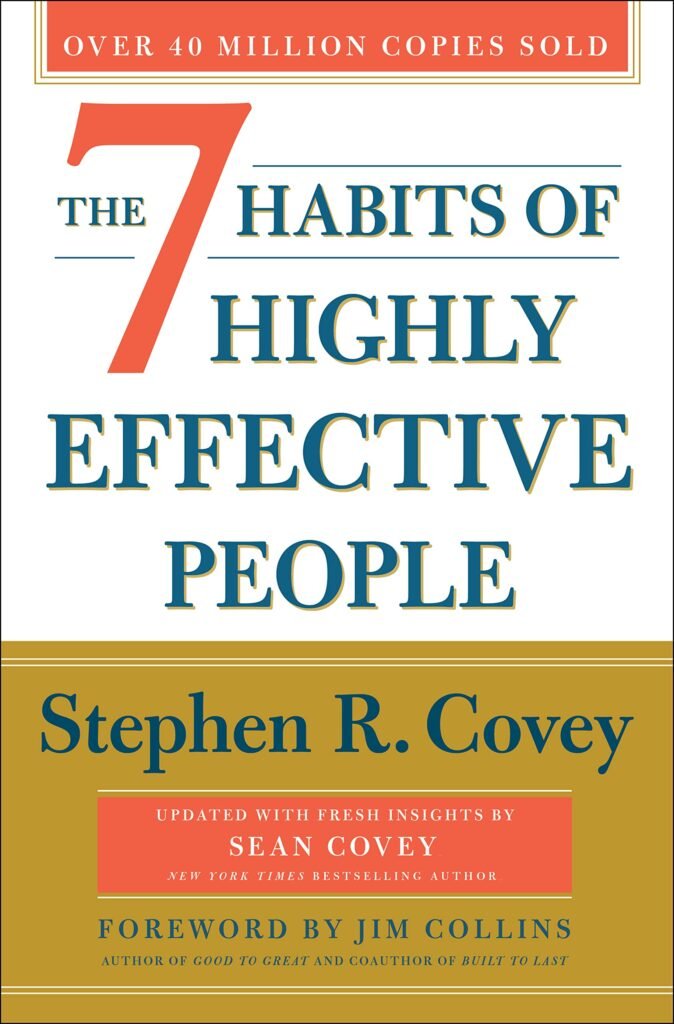What makes a people an extraordinary leader? Is it an attractive character? Is it confidence or a bold vision? I would argue that great leaders possess all of these characteristics. But how do you get these characteristics? Despite the fact that there is such a thing as a “born leader,” the majority of those of us who are tasked with leading do not fall into that category. Fortunately, there is a wealth of information available to equip us with the qualities of a great leader. Beginning with management books is a good idea.
List Of Books
1. The Five Dysfunctions of a Team

Patrick Lencioni’s “The Five Dysfunctions of a Team” is not your typical management book. Lencioni, who is also the president and founder of a management consulting firm that focuses on the health of organizations and the development of teams, decided to be creative and share his thoughts in a fictional story. In a nutshell, the plot follows Kathryn Petersen’s efforts to create a healthy work environment in the fictional DecisionTech. She discusses the five dysfunctions of the team model with her executives as the story progresses, asserting that these dysfunctions are the reason the team fails.
The Five Dysfunctions Model looks like a five-level pyramid when viewed graphically. Like in any pyramid, the levels don’t exist independently from one another; Kathryn explains that they are connected and that each dysfunction affects the one below it directly. Close to the levels, she composes a word that fills in as a proof of a specific brokenness.
In addition to the fictional section, Lencioni organizes and provides a summary of his ideas in the theoretical section of the book. In this section, he also provides a tool that assists in determining the team’s susceptibility to the five dysfunctions.
2. How to win friends and Influence People

Dale Carnegie’s timeless guide to improving relationships and life success is How to Win Friends and Influence People. Carnegie teaches us, above all else, that connecting with other people is a skill, not a talent, and that we can improve this skill by being honest about our flaws and deliberate about our efforts to overcome them.
Given that it was written in 1936, the management book is dry, but the concepts it discusses are still very relevant to life today. This Hubspot summary is a decent starting point for learning more about how to incorporate each principle into your life if you don’t want to read the text. Not each of the standards will impact you, and that is fine. You can choose a few of the tenets that will be helpful to you right now and come back to the list later.
- Principles of People Management
- Don’t criticize, condemn, or complain.
- Give genuine and sincere thanks.
- Stimulate in the other individual an exciting need.
- Six Ways to Make Others Like You
- Take an interest in other people’s lives seriously.
- Smile.
- Keep in mind that the sweetest and most significant sound in any language is a person’s name.
- Learn to listen well. Urge others to discuss themselves.
- Talk about the interests of the other person.
- Give the other person a sense of significance.
Be a Leader: How to Change People
- Start with genuine appreciation and praise
- Indirectly draw attention to people’s errors.
- Discuss your own slip-ups prior to condemning the other individual.
- Instead of giving direct orders, ask questions.
- Let the other person keep their cool.
3. Extreme Ownership: How U.S. Navy SEALs Lead and Win

You will improve as a leader if you take extreme ownership. In it, Navy SEALs Willink and Babin talk about important leadership lessons like taking extreme ownership, getting rid of your ego, enforcing standards, simplifying, setting priorities, and doing what needs to be done.
Taking full responsibility for everything that affects your or your management team’s mission is extreme ownership. Challenges, successes, failures, and everything in between fall under this category. You can begin resolving issues and stop assigning blame with extreme ownership.
Believing, communicating, and listening are essential qualities for leaders to possess. In addition, they must clearly communicate the strategy to subordinates and allow them to ask questions until they also believe in the strategy and mission. Finally, in order to maintain faith and ensure flawless execution, the leader must continue to listen to and support subordinates.
Put aside your ego and personal motives Your ego and personal motives must be secondary to the mission. Your responsibility as a leader is to carry out the mission, not to worry about how others perceive your work or to make your life as simple as possible. It takes genuine strength of character to put your self-image aside.
Improve and explain management system. Keep the mission as basic and clear as could be expected. Execution becomes more difficult and confusing when things are complicated. The better the strategy, the simpler it is.
4. The Making of a Manager: What to Do When Everyone Looks to You

Julie Zhuo was given the opportunity of a lifetime to manage Facebook’s design team when she was just 25 years old. All the more incredibly still, this job was Zhuo’s most memorable administrative job. Zhuo, thrown into the deep end, quickly asked herself, “What exactly does a manager do?”
Zhuo believed, when she first started out as a manager, that her job was to hold meetings with team members, provide feedback on how they were doing, and determine which subordinates to promote or fire. However, she quickly realized that her strategy was not long-term because it focused on everyday tasks rather than long-term objectives.
Zhuo grew more strategic over the course of a few years of experience. She realized that a manager’s job is to concentrate on larger issues. These include making sure her team was working together well, assisting team members in achieving their career goals, and creating procedures to increase efficiency without any problems.
Zhuo, on the other hand, now that she has nearly a decade of management experience under her belt, believes that the answer to the question of what a manager does is far more concise than either of her previous lists could have captured. It turns out that a manager’s job is to get your team to perform better. You will begin to recognize the difference between a good manager and a mediocre manager as you work toward this objective.
5. Turn the Ship Around! A True Story of Turning Followers Into Leaders

David Marquet, previous naval force chief of the atomic controlled submarine USS St Nick Fe, makes sense of his progress in perhaps of the most hierarchical design on the planet, in the naval force. During crucial combat decisions, the results of the leader-leader structure are impressive. It works well to free competent people with clear goals. People perform better when they take responsibility for their actions. They not only put an end to the bad competition between themselves, but they also focus on making the mechanisms that are already in place better.
A passive structure is a leader-follower structure. When waiting for an order, followers begin to make a lot of mistakes because everything is on the leader’s side. Transforming everybody into a pioneer (having a pioneer chief methodology) forestalls numerous blunders.
All leaders can learn from Navy Captain David Marquet’s success. But I can’t stop thinking, “How can someone help set up parts of the leader-leader structure in an organization if they aren’t a leader?”
6. The 7 Habits of Highly Effective People

The fundamental of management tenets of character that are the foundation of happiness and success are outlined in Covey’s seven habits. A principle-centered approach is presented in The 7 Habits of Highly Effective People to personal and interpersonal effectiveness. It aims to alter your inner core, character, and motives rather than changing your behavior and attitudes in the public eye.
This book’s seven habits will help you move from dependence to independence and then interdependence. Covey contends that interdependence produces the greatest results, whereas society and the majority of self-help books promote independence as the highest achievement.
The idea of interdependence is more mature and sophisticated. It prevents you from realizing that you are an independent being and that working together with others will lead to better outcomes than working alone. You must cultivate each of the seven habits outlined in the book in order to reach this level of interdependence. The following are the seven behaviors:
- Be proactive
- Start with the end in mind
- Put first things first
- Think win-win
- Learn to synergize
- Sharpen the saw
This book summary will look at each of these habits and show you how to put them into action to become more successful in achieving whatever it is that you want to accomplish.
7. First, Break All the Rules

You will discover which conventional wisdom to disregard in this summary. To begin, you will find a straightforward list of twelve questions that will assist you in determining whether your workplace is suitable for attracting and retaining the best employees. You will then become familiar with the four keys for opening the capability of all of your representatives.
Choosing employees based on talent rather than intelligence or experience is the first key. Learn what talent is and why you can’t create it from scratch with the help of this summary. The second important thing is to evaluate a worker’s performance by looking for desired outcomes rather than having direct control over how they do their job. In order to measure and track performance, you will learn how to define outcomes.
Rejecting the conventional wisdom that people can be fixed is the third key to great management.
The authors advise focusing on strengths rather than weaknesses. You will be taught how to deal with your weaknesses.
Finding the ideal match for the skills of your employees is the fourth and final key. Once more, you will figure out how to stay away from the customary way of thinking that advancement is the just barely award for elite execution – an attitude that makes an association where everybody is eventually elevated to their degree of ineptitude
8. Primal Leadership: The Hidden Driver of Great Performance

It was demonstrated by the theory of emotional intelligence at work that emotionally intelligent people achieve success first. According to new research, the leader’s mood and actions influence everyone else’s moods and actions, out of all the factors that affect bottom-line performance. A deeper examination of an earlier claim that a leader’s emotional intelligence creates a particular culture or work environment is provided by the author’s observation about the overwhelming impact of a leader’s “emotional style.”
Research demonstrated that environments with high levels of emotional intelligence foster information sharing, trust, risk-taking, and learning. Anxiety and fear abound in environments with low emotional intelligence. In the workplace, and even in the literature on leadership and performance, the emotional impact of a leader is almost never discussed.
The authors discovered that wires carry emotional intelligence. To be more specific, the business’s mood is literally contagious and spreads quickly and inexorably. Emotional leadership is a leader’s primary responsibility if a leader’s mood and behaviors are such powerful drivers of business success. Putting on a brave face every day is not enough to fulfill this primal leadership role. An executive must analyze how his emotional leadership influences the organization’s moods and actions through reflective analysis before adjusting his behavior with equal discipline.
